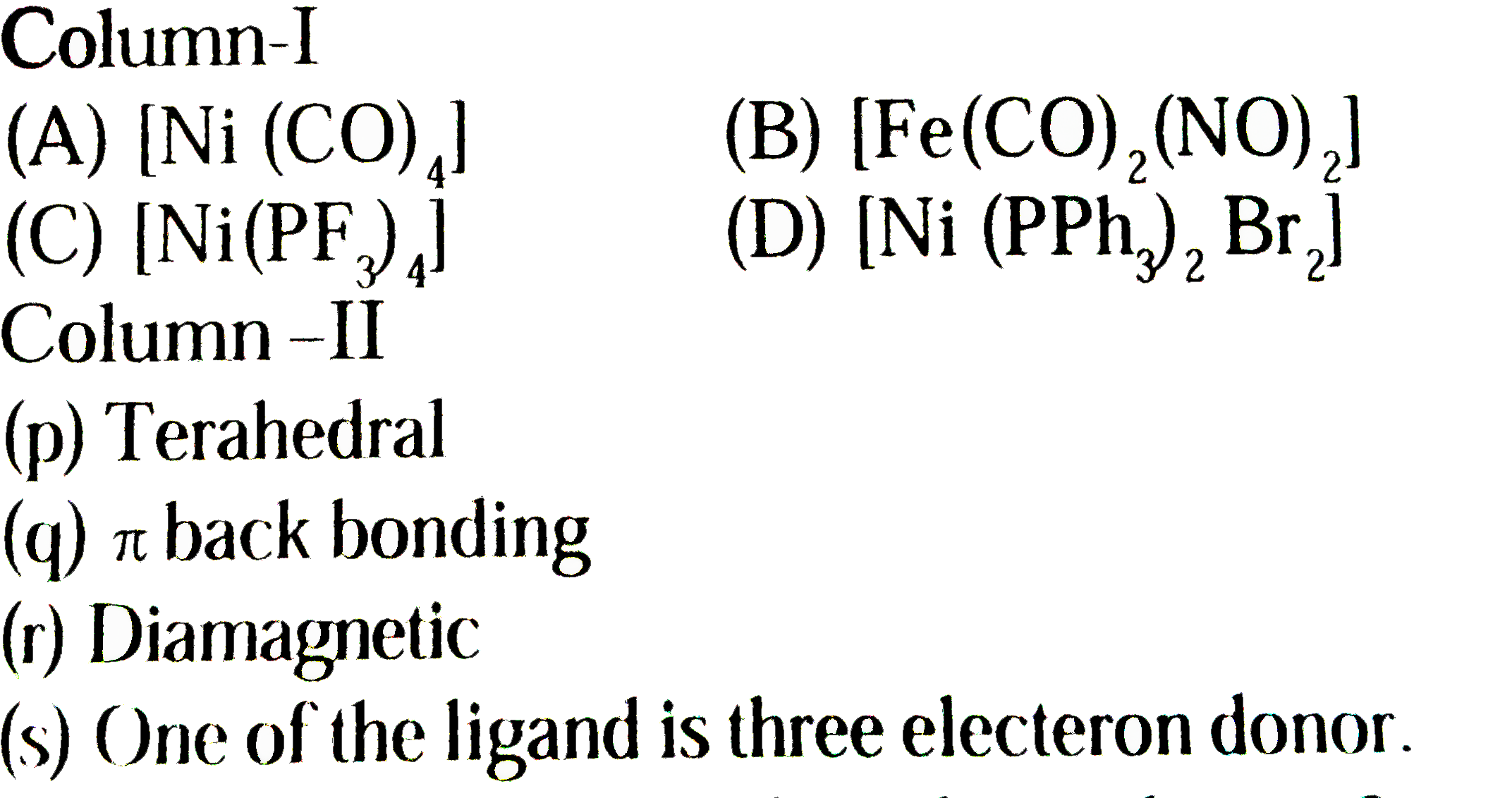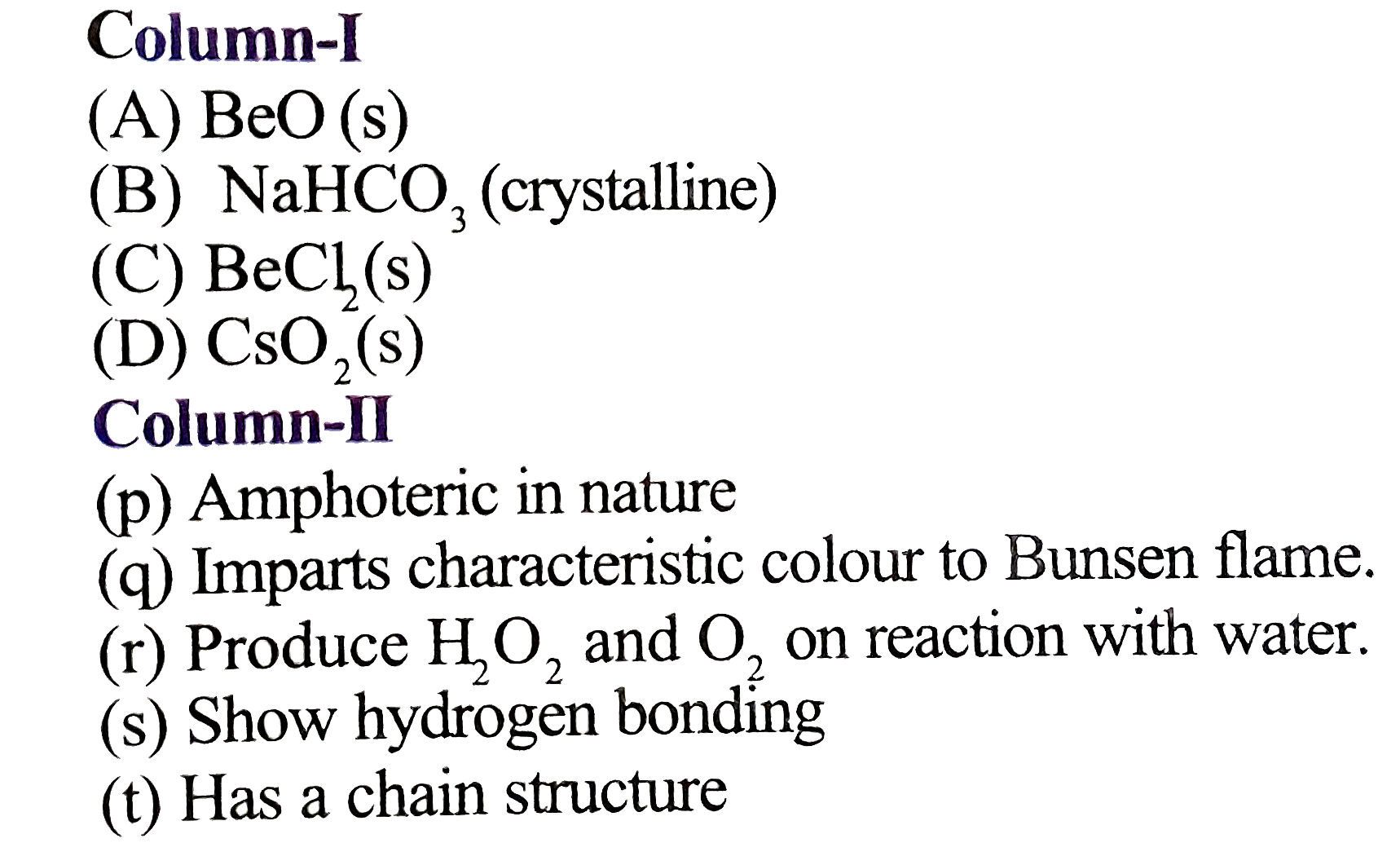Match the values of ionization energy and electron gain enthalpy listed in column I with characteristic(s) of elements listed in column II.
Column-IColumn-II(A)2372 5251 +48(p)Element which acts as a strong reducing agent(B)419 3051 -48(q)Element which exists as a monoatomic molecule(C)1681 3374 -333(r)Least reactive non-metal(D)1008 1846 -295(s)Element which acts as a strong oxidising agent(t)Element which oxides is a stronger basic in nature
Text Solution
The correct Answer is:A→q ; B→p,t ;C→s ; D→r
(A)Inert gas exist as monoatomic molecule. They have highest IE1 and IE2 and positive electron gain enthalpies.
(B)Alkali metal -IE1 is low because of bigger size of atom and IE2 is high due to noble gas configuration . As it has low IE1 it can lose one electron easily and thus more electropositive .So it acts as strong reducing agents and their oxides are basic in nature.They have low negative value of ΔHeg because of large size.
(C )IE1andIE2 both high and negative value of electron gain enthalpy is very high because of high nuclear charge and small size of atoms, so it has a greater tendency to accept an additional electron.So it (F) act as a strong oxidising agent.
(D)As it has less negative value for ΔHeg than (C ) thus it will be least reactive non-metal (I)
|
Updated on:21/07/2023
Topper's Solved these Questions
Similar Questions
Knowledge Check
- Question 1 - Select One
Match the reaction listed in coloumn-I with characteristic(s) listed in column-II
 A1−p,q,2−p,q,s,3−r,4−sB1−p,q,2−p,q,r,s,3−r,4−sC1−p,2−p,q,r,s,3−r,4−sD1−p,q,2−q,r,s,3−s,4−r
A1−p,q,2−p,q,s,3−r,4−sB1−p,q,2−p,q,r,s,3−r,4−sC1−p,2−p,q,r,s,3−r,4−sD1−p,q,2−q,r,s,3−s,4−r
Match the values of 1st and 2nd ionisation energy and electron gain enthalpy given in the column-I with types of elements/compounds given in column-II
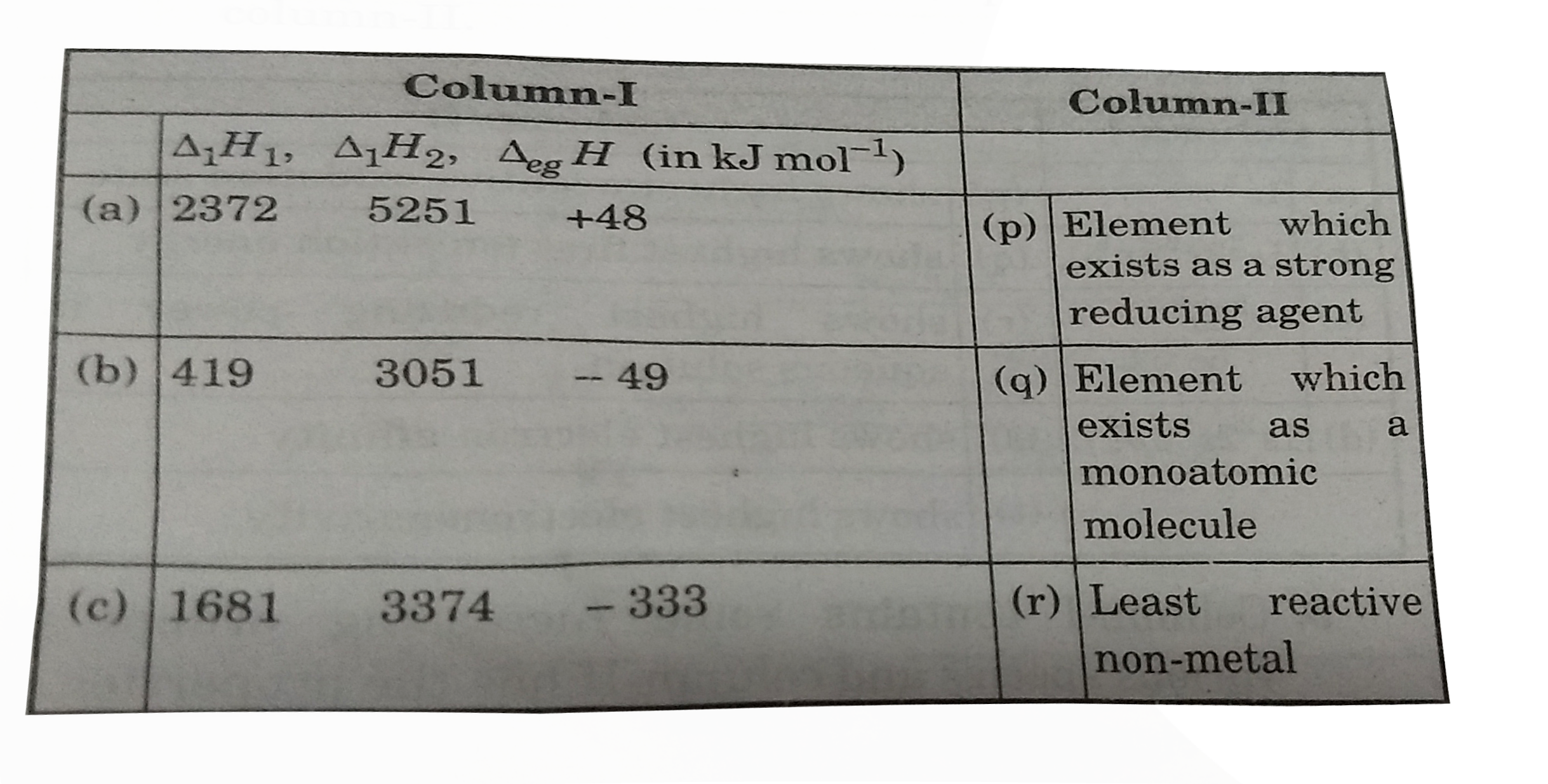
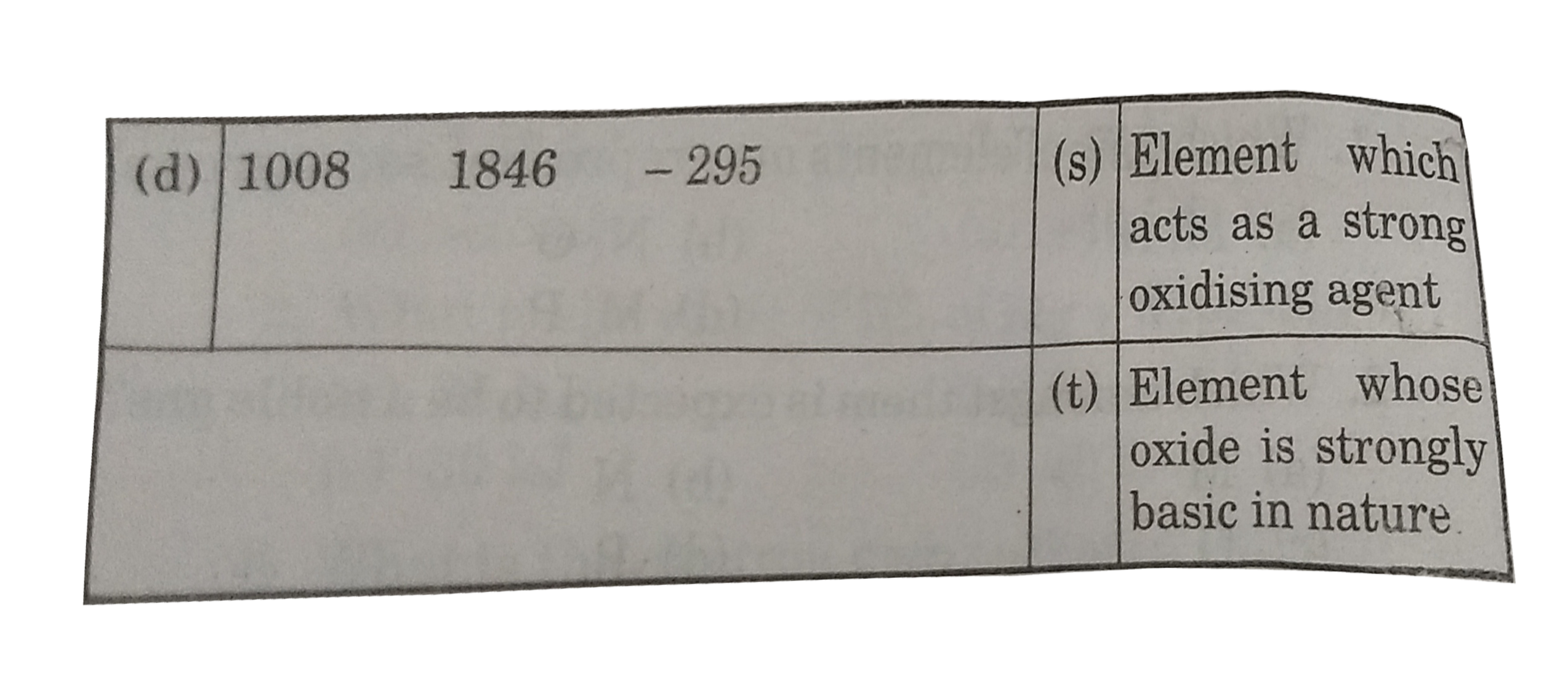 View Solution
View SolutionMatch the compound listed in Column I with characteristic listed in Column II
 View Solution
View SolutionMatch the compound listed in Column I with characteristic listed in Column II
 View Solution
View SolutionMatch the reactions listed in column-I with the characteristic (s) of the products listed in column-II.
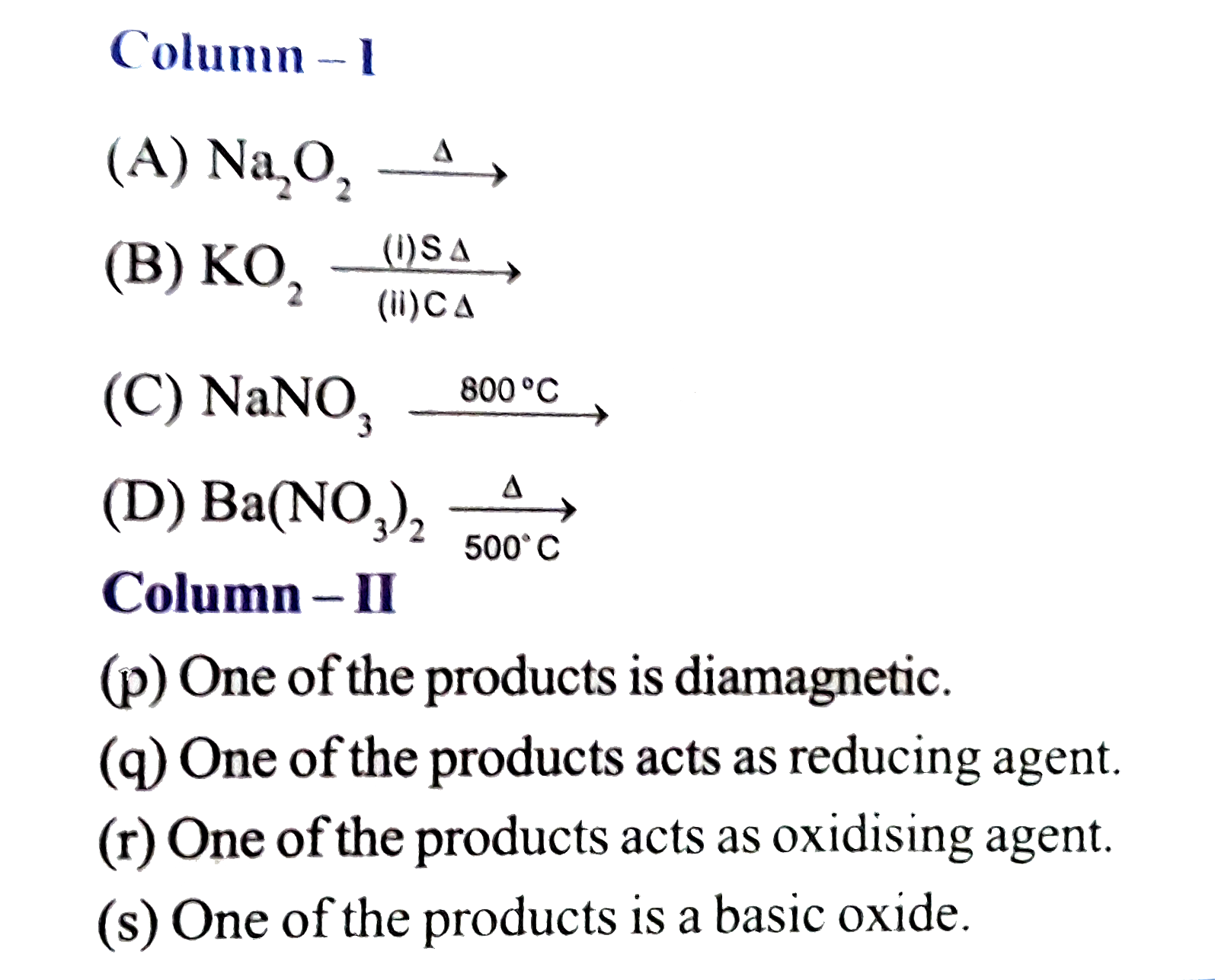 View Solution
View SolutionMatch the complexes listed in column-I with characteristic (s)/type of bridisation listed in column -II
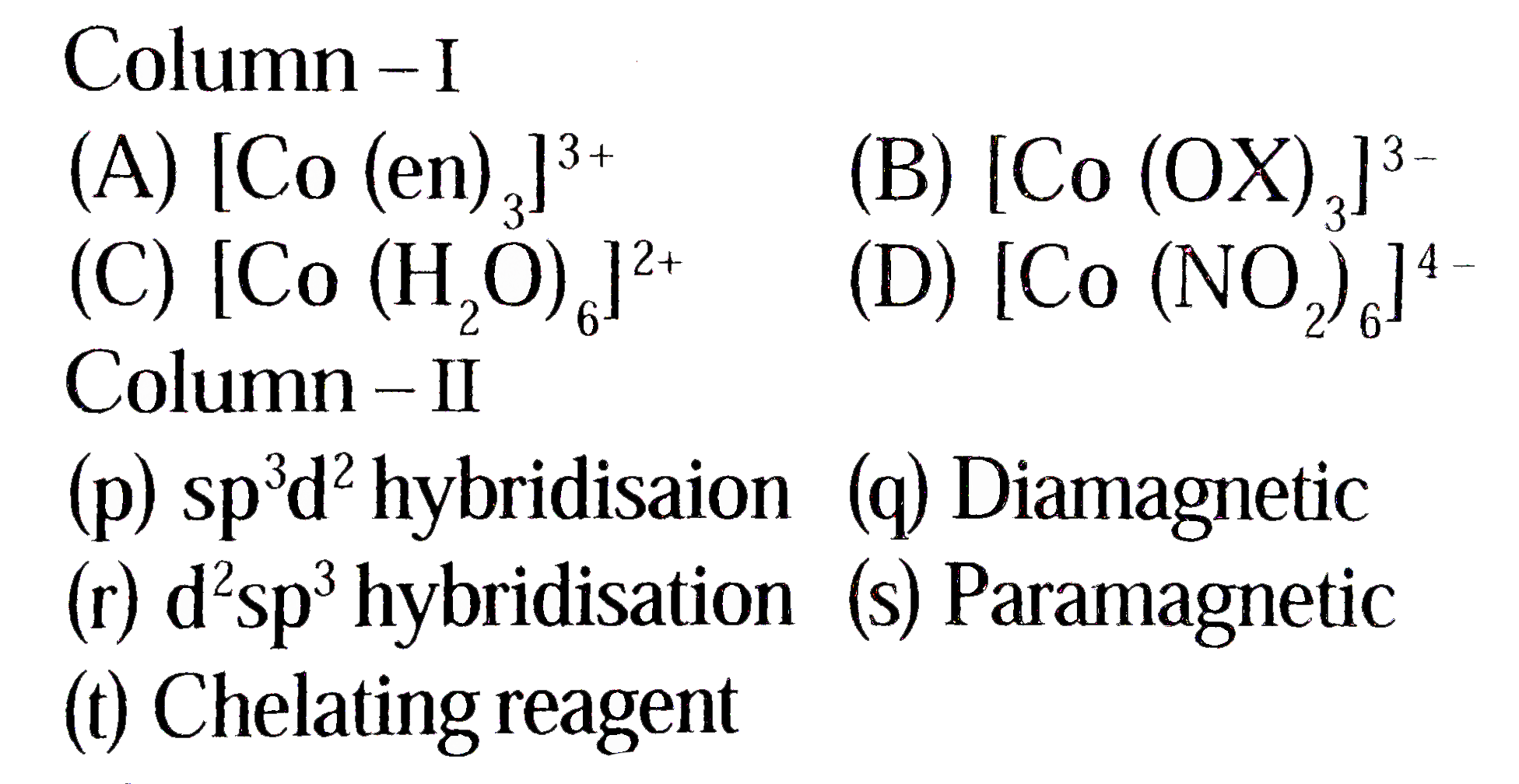 View Solution
View SolutionMatch the complexes listed in column-I with characteristic (s)/type hybridisation listed in column-II.
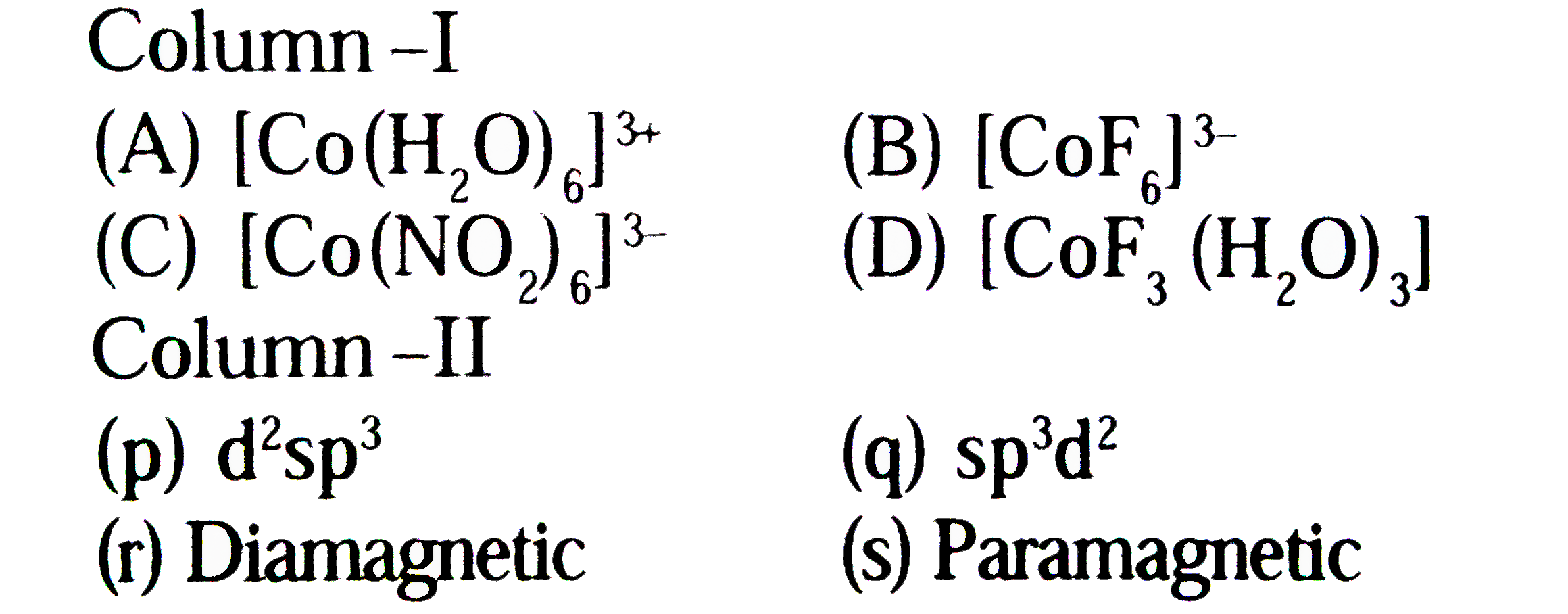 View Solution
View SolutionWhy s-block elements act as strong reducing agents ?
View Solution

